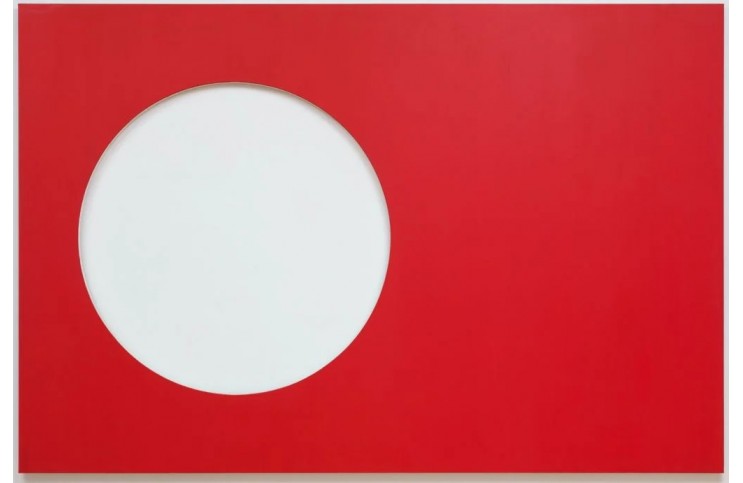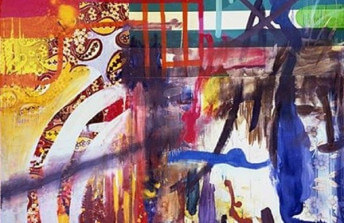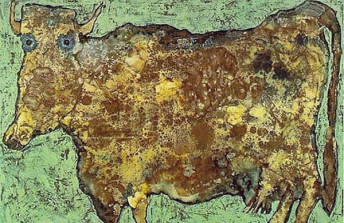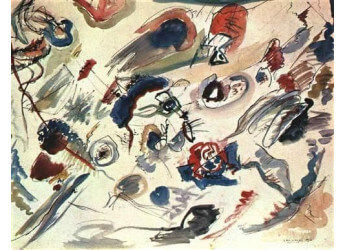ABSTRACT / NOT ABSTRACT by Gagosian and Jeffrey Deitch at Art Basel Miami Beach 2017
Dec 13, 2017
Art Week Miami 2017 has closed, and with more than a dozen concurrent fairs and scores of pop-up shows around the city, it is safe to say no one saw everything. But despite the competition, the Jeffrey Deitch / Larry Gagosian Art Basel Miami collaboration at the Moore Building in the Design District succeeded for the third year in a row in becoming one of the most talked about exhibitions of the week. Deitch and Gagosian are among the most experienced and knowledgeable art market veterans alive today. Deitch started his career while still in college, opening a gallery in a small room of a hotel in Massachusetts in the early 1970s. He established the art investment arm of Citibank in the 80s, and in the 90s opened Deitch Projects in New York. He closed his gallery in 2010 to accept a position as Director of the Museum of Contemporary Art Los Angeles. Since leaving that role in 2015, he has returned to his art dealer roots. Gagosian also began his career in college. He started out in the 1960s selling posters near the UCLA campus. He gradually built up his trade, eventually opening galleries in Los Angeles and New York. Gagosian Gallery opened in 1980, and today has 16 locations around the world. These two visionaries began their Miami Beach collaboration in 2015 with ”Unrealism,” an exhibition featuring work by 50 international artists, which explored what they saw as a return to figurative imagery in contemporary art. In 2016, they enlisted Diana Widmaier Picasso (granddaughter of the artist) to curate “Desire,” an exhibition exploring contemporary notions of eroticism in the work of 50 artists. This year, Deitch and Gagosian did a 180-degree turn from their first collaboration and presented “ABSTRACT / NOT ABSTRACT,” a show featuring the work of 33 artists, which attempted to explore the immense depth and breadth of contemporary abstract art.
These Roots Run Deep
The initial press release for ABSTRACT / NOT ABSTRACT made the exhibition sound as though it was going to be an attempt to show the entire evolution of abstraction. It referenced that the roots of abstraction stretched back to about 1910, and put forth the idea of how amazing it is that more than 100 years later artists are still finding new ways to explore and expand the boundaries of abstract art. Though ambitious, the thought of such a show featuring only 33 artists and occurring in the Moore Building scared me. That space is large and beautiful, and is endowed with many wonderful spaces in which to display art, but it would take a lot more room and maybe thousands more artists to tell the full story of the roots of modernist abstraction.
Happily, the final incarnation of the exhibition did not try to take on that ambitious assignment. Its scope ended up being decidedly more contemporary. It was more like an exploration of the past four decades of abstraction. Among the elders included in the show were John Armleder and Richard Prince, both nearing 70, and Rudolf Stingel, Jeff Koons and Albert Oehlen, all in their 60s. Notable on the younger end were Torey Thornton (27), whose whimsical, Art Brut-ish compositions conjure a dreamworld between Saturday morning cartoons and a neon wasteland; Analia Saban (37), whose muted, earth tone creations evoke luxury while hinting at something that always remains hidden; and Korakrit Arunanondchai (31), whose visually explosive, multi-disciplinary work employs color and form in thrilling ways that bring invisible energies to life on canvases and screens.
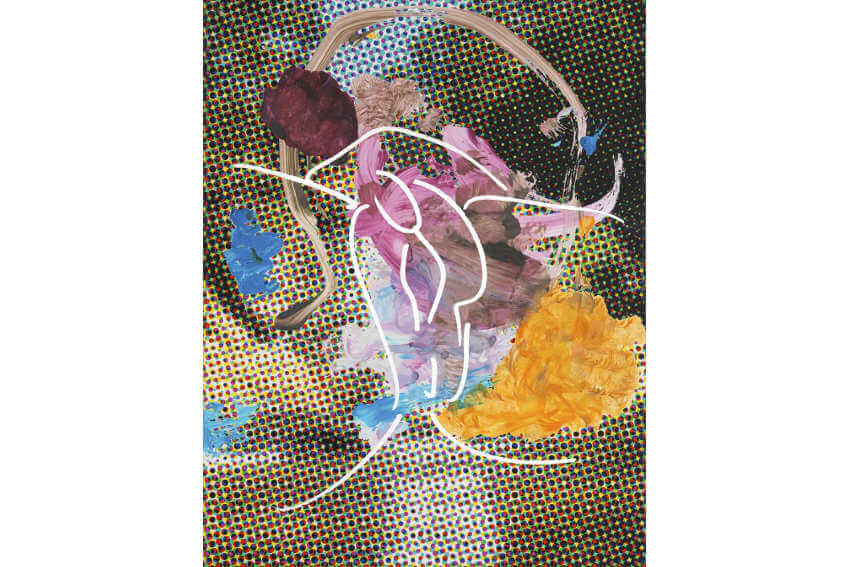 Jeff Koons - Landscape (Waterfall) I, 2007. © Jeff Koons. Photography by Rob McKeever. Courtesy Gagosian
Jeff Koons - Landscape (Waterfall) I, 2007. © Jeff Koons. Photography by Rob McKeever. Courtesy Gagosian
A New Context for Contemporary Abstraction
Most refreshing about ABSTRACT / NOT ABSTRACT is that it succeeded in expanding the constrained concept the art media has had about abstract art in recent years. I am among many writers who feel the show was an effective argument against the existence of so-called Zombie Formalism. The first time I read this term was in 2014, in an article by Walter Robinson on Artspace. Robinson invoked the term as a way of bemoaning that, in his opinion, so much contemporary abstraction looks the same. He explained it as, “‘Formalism’ because this art involves a straightforward, reductive, essentialist method of making a painting...and ‘Zombie’ because it brings back to life the discarded aesthetics of Clement Greenberg.” What that viewpoint lacks, in my opinion, is perspective. It sounds less like enlightened criticism and more like the beleaguered rant of an overworked art reviewer who went to too many shows featuring similar kinds of work in a short amount of time.
Reality is more vivid than Robinson let on. Sure, the past influences the present. But when it comes to contemporary aesthetics, everything from every time period is valid all the time. Someone who likes texture could enjoy looking at the work of hundreds of artists who explore texture and never get bored. Someone who derives meaning from color relationships could look at hundreds of color theory obsessed artists and never tire of it. Someone who appreciates abstraction and grasps the inherent difficulty of making a new work of art would never deride an entire generation of artists with a label that makes them seem derivative and trite. So I commend Deitch and Gagosian. With ABSTRACT / NOT ABSTRACT, they did their small part to put the idea of Zombie Formalism to bed. Though they could have easily included many more artists and filled up much more space, the selection of artists they included in this show offers a sufficiently varied glimpse at the range of work being created by abstract artists today to prove undeniably that the roots of abstraction are still as healthy as they have ever been, and run as deep as they have ever run.
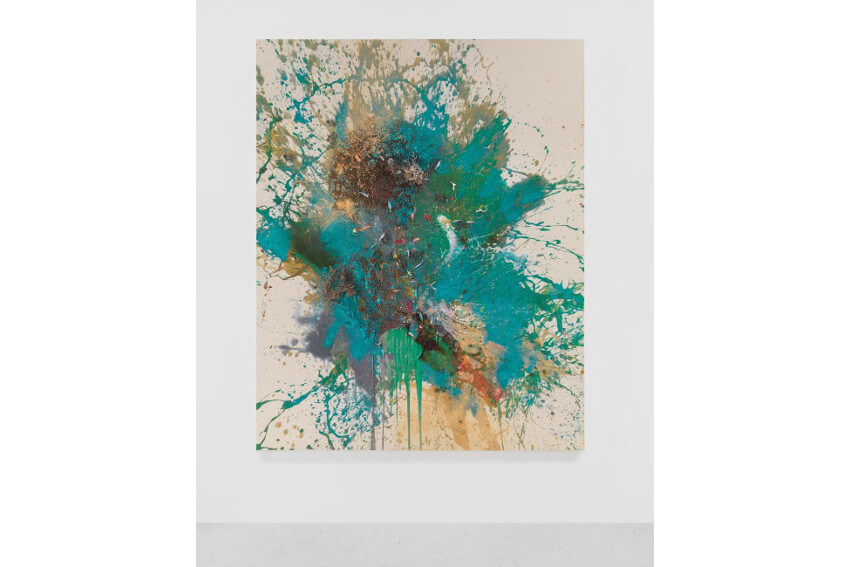 John M. Armleder - Galaxy, 2014. Photo by EPW Studio. Courtesy the artist and Massimo De Carlo, Milan/London/Hong Kong and Gagosian
John M. Armleder - Galaxy, 2014. Photo by EPW Studio. Courtesy the artist and Massimo De Carlo, Milan/London/Hong Kong and Gagosian
Featured image: Steven Parrino - Untitled, 1988, Enamel on canvas, 72 × 108 in, 182.9 × 274.3 cm, © Steven Parrino. Courtesy the Parrino Family Estate and Gagosian Gallery. Photography by Rob McKeever.
All images used for illustrative purposes only
By Phillip Barcio
